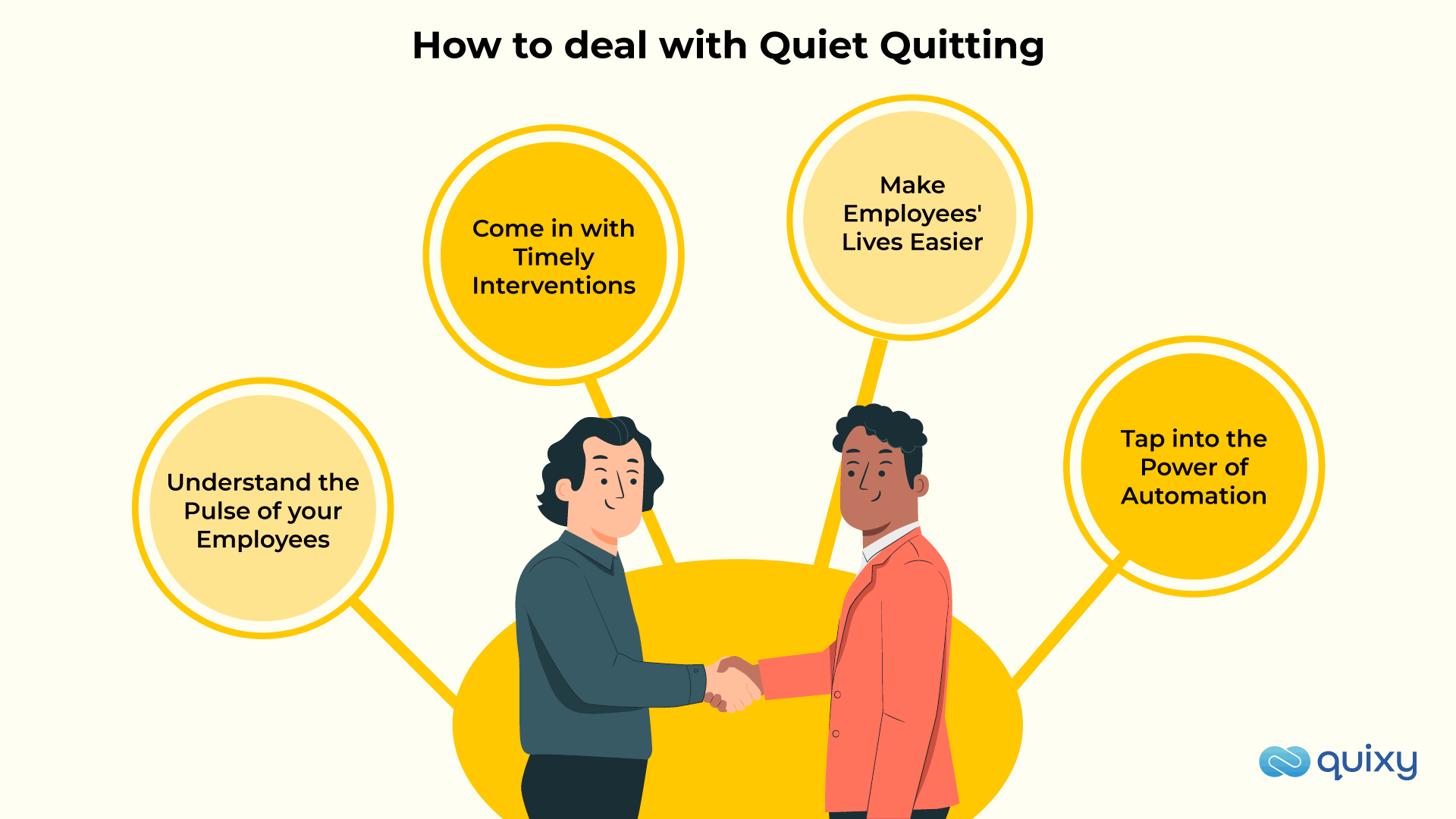
This article was first published on Nasscom Community.
A phrase that emerged from a 17-second video on TikTok has taken the corporate world by storm. Quiet quitting is essentially a form of adopting “work-to-rule” where employees work as per the minimum requirement of their jobs and refuse to go above and beyond. Sure, they still perform their duties, but that’s pretty much it. They are limiting their contribution to their job descriptions and mandated HR policies.
It is quite apparent that a high number of employees adopting the mindset of quiet quitting would be harmful to any organization. Firstly, the phenomenon can greatly strife creativity, innovation, and other development initiatives led by employees. This can have harmful consequences on employee collaboration as well. By doing the bare minimum, an employee might increase the workload on their co-workers. Lower productivity is another issue that organizations are likely to face. The work culture of an organization where quiet-quitting is widely adopted can have disastrous business outcomes. What is even scarier is that, according to Gallup, quiet quitters make up 50% of the American workforce. While the Indian statistics are not measured as such, the workforce here is likely to follow this trend.
It is also essential to understand the employees’ perspective here. After going through the physical and mental toll that resulted from the pandemic and working remotely for more than two years, flexibility and work-life balance have become priorities that can be deal-breakers for them. It is not that employees suddenly want to give up on their organizations. These are the same employees who supported their companies during COVID and performed their duties while facing adversities. The situation is simply that employees are tired of going above and beyond in a one-sided manner. They now demand their organizations to go above and beyond in supporting them, and if that does not happen, they prefer doing the bare minimum. Therefore, organizations can shield themselves from quiet-quitting by being cognizant of these needs and taking steps at the right time.
Also Read: 20+ Smart Time Management Activities for Highly Productive Teams
How to deal with Quiet Quitting
Now that the need to tackle the issue of quiet-quitting right in the bud has been established, let’s dive into the ways that organizations can be proactive in dealing with the same:

1. Understand the Pulse of your Employees
The biggest issue that can lead to quiet-quitting can be ignorance, indifference, or the sheer lack of awareness of managers about what their employees are going through. Conversations, surveys, tapping on the existing data, and open houses can be great tools to bring any underlying issues to the surface. Proactive measures to understand the good and bad faced by the employees allow managers to tackle problems at the earliest and prevent employees from reaching the stage of quiet-quitting much in advance.
2. Come in with Timely Interventions
Once the problem areas have been established, measures to solve these problems are the next natural step. However, jumping to solve these problems without differentiating the symptoms and roots of the problem will not improve the situation. Managers and HR professionals can instead co-create solutions for employee-friendly policies and a conducive work environment with the employees themselves.
3. Make Employees’ Lives Easier
Despite the organization’s great work environment and interventions, if the content of their work is monotonous, the employees are bound to inch closer to quitting quietly. Manual work, repetitive tasks, or tasks that require a lot of paperwork can lead to drastic dips in employee morale and productivity. A very effective intervention can be to identify such grunt work in your organization and to ensure that they are eliminated and minimized as much as possible.

4. Tap into the Power of Automation
Automation allows organizations to digitize processes and reduce manual paperwork greatly. What’s more, with no-code platforms, such applications can be created easily like never before. No-code platforms allow users to create effective applications and software without writing a single line of code. As a result, business users themselves can create solutions to the problems they know best without relying on the IT department. This automatically reduces the load on the IT employees and creates opportunities to work on important and strategic aspects for all instead of getting bogged down by the monotony. Tapping into such technology platforms can act as an excellent shield against quiet quitting.
Also Read: The Top 7 Causes of Low Productivity Levels
Conclusion
After the Great Resignation, Quiet Quitting seems to be the next issue that will keep managers and business owners awake at night. All with the right reason, such as a form of withdrawal, can lead to a loss of competitive advantage for an organization in the long term. However, as we can see, all it requires is responsiveness and buy-in from organizations to prevent this phenomenon from keeping in their organization.
Exploring tech platforms that enable this transformation is quite crucial. No-code can enable businesses to transform ideas into solutions and problems into opportunities.
Subscribe
Login
Please login to comment
0 Comments
Oldest















